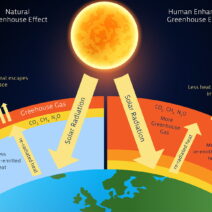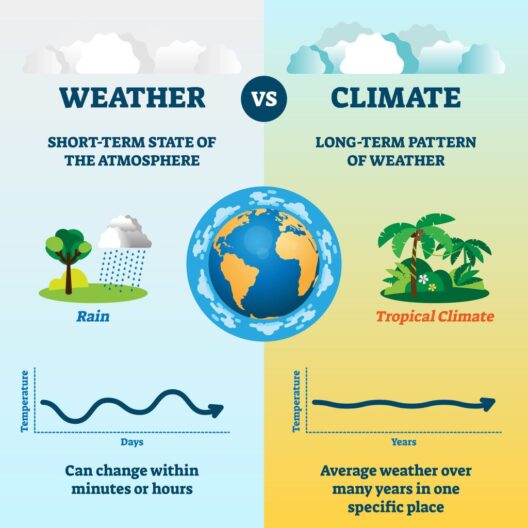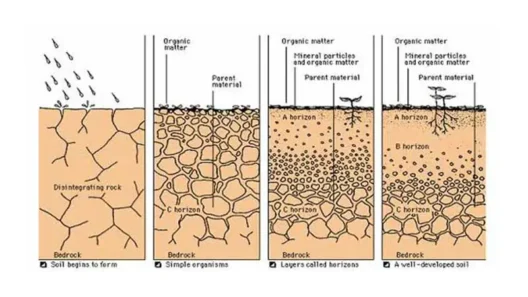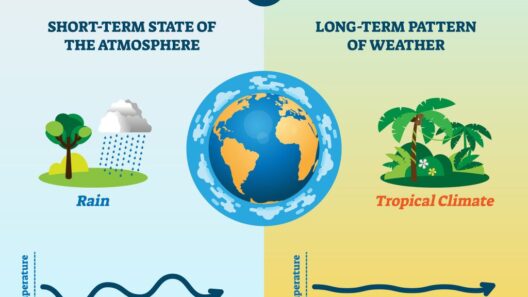Climate change, an intricate tapestry woven from the threads of industrial progression, deforestation, and fossil fuel combustion, has morphed from a distant concern into an all-consuming crisis over the last century. This transformation raises a provocative question: When did climate change transition from scientific conjecture to an unequivocal existential threat? The timeline is multifaceted and riddled with pivotal moments that have collectively shaped our understanding and response to climate upheaval.
In the early 20th century, the seeds of climate awareness were barely germinating. It was during this time that scientists first began to explore the relationship between atmospheric carbon dioxide concentrations and global temperatures. The landmark work of Svante Arrhenius in 1896 proposed that increased carbon emissions from burning fossil fuels could potentially raise Earth’s thermostat, yet it fell largely on deaf ears. The impacts of industrialization, while palpable, were overshadowed by the immediate concerns of economic growth and societal development.
Fast forward to the 1950s and 1960s, when the scientific community’s clarion call began to gain momentum. Observations from Mauna Loa Observatory in Hawaii, initiated by Charles David Keeling, revealed an alarming uptick in atmospheric carbon dioxide levels. Keeling’s curve became emblematic of a new era; as the planet warmed, so did public consciousness. However, even in the throes of burgeoning awareness, progress was sluggish. Climate change was still perceived as a nebulous problem, relegated to the annals of theoretical discourse rather than an immediate threat.
The watershed moment arrived in 1972 when the United Nations held its first Conference on the Human Environment in Stockholm. Delegates from 113 nations gathered to address the pressing challenges posed by environmental degradation and the burgeoning crisis of climate change. This meeting was a clarion call for global cooperation, yet the response was still tepid. The concept of sustainable development began to take root, but the urgency of the climate crisis continued to simmer beneath the surface, unacknowledged by policymakers.
As the 1980s unfolded, scientific assertions grew increasingly dire. The 1988 establishment of the Intergovernmental Panel on Climate Change (IPCC) signified a pivotal shift; it was the first time a global governing body dedicated itself to synthesizing climate data on an international scale. The IPCC’s first assessment report in 1990 warned of “potentially serious” economic and social consequences due to climate change, propelling the issue onto the international stage.
The next two decades would witness a burgeoning climate movement, equipped with an arsenal of compelling data and narratives. The 1992 Earth Summit in Rio de Janeiro marked another significant milestone as world leaders convened to adopt the United Nations Framework Convention on Climate Change (UNFCCC). This agreement laid the institutional groundwork for future negotiations, yet here too, the pace of change lagged behind the mounting scientific urgency.
Into the early 2000s, the convergence of evidence reached a critical mass. The release of the IPCC’s Third Assessment Report in 2001 heralded an apocalyptic outlook, predicting exacerbated weather phenomena, sea-level rise, and destabilized ecosystems. Activism thrived, ushering in a new wave of grassroots movements demanding systemic change. While rhetoric swelled, tangible action remained elusive as partisan politics began to overshadow scientific consensus.
The emergence of natural disasters exacerbated by climate change in the 2000s served as harrowing reminders of the impending crisis. Hurricane Katrina in 2005, with its catastrophic devastation, brought climate change into the homes of millions. The dialogue shifted from scientific jargon to personal narratives, creating a visceral understanding of the consequences. Media coverage intensified, framing climate change not merely as an environmental issue, but as a humanitarian crisis. A question loomed large: could humanity muster the collective will to respond?
The 2015 Paris Agreement represented a pivotal juncture—a moment when nearly every nation pledged to curtail emissions in a concerted effort to limit global warming to below 2 degrees Celsius. For the first time, nations bore a moral and ethical obligation to address climate change collectively. Yet, paradoxically, the agreement underscored the urgency that had persisted for decades, now amplified by unchecked greenhouse gas emissions and political inertia.
In recent years, the climate narrative has intensified. The increasing frequency of wildfires, hurricanes, and extreme temperatures has spurred a new generation of activists and thinkers, perhaps leading us to ponder the question: At what point do conversations transform into action? The rise of movements like Fridays for Future and Extinction Rebellion illustrates this transformative energy. Today, climate change is a rallying cry that transcends borders, uniting disparate voices into a singular narrative demanding accountability and decisive action.
However, the question of when climate change fully became a crisis is complex. It is not merely about historical markers or scientific milestones, but also about societal acknowledgment and readiness to act. As we stand at this precarious juncture, we face a daunting challenge—a challenge not only of technology and policy, but also of human will and solidarity. The future of our planet rests precariously on our ability to bridge the divide between knowledge and action.
Ultimately, as the timeline of climate change unveils, it reveals a profound narrative of awakening. Each event is a reminder of our shared responsibility and interconnected fate. The transition from awareness to action is imperative; it compels us to confront the consequences of our choices and to recognize the rich tapestry of life that hangs in the balance. The unfolding saga of climate change is not merely a scientific dialogue—it is a call to arms for every inhabitant of this planet.






